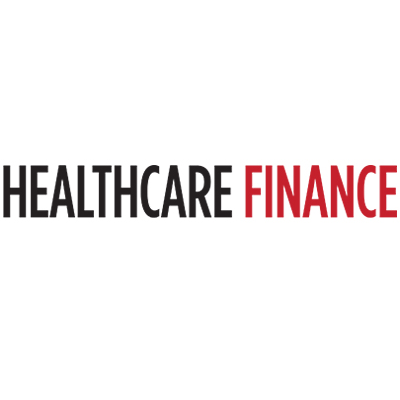Speak with a licensed insurance agent
Does Medicare Cover Observation in a Hospital?
If you receive observation care in a hospital, Medicare may cover some of your costs, but not in the same way as if you are admitted for inpatient care. This can affect your costs. Learn more about observation status and Medicare hospital coverage.
Medicare typically does cover observation in a hospital if it is deemed medically necessary by a doctor, but it’s very important that you understand how observation status may affect your out-of-pocket Medicare costs.
Medicare Advantage (Part C) plans may also cover observation in a hospital if it’s ordered by your doctor.
Medicare Advantage plans also include an annual out-of-pocket spending limit, which can potentially save you money in Medicare costs for your observation services.
Original Medicare does not include an out-of-pocket spending limit.
How does Medicare cover observation in hospital?
If you receive observation services in a hospital, Medicare Part B (medical insurance) will typically pay for your doctor services and hospital outpatient services (such as lab tests and IV medication) received at the hospital.
There are some important things you should know about what hospital observation status means for your Medicare coverage:
- Even if you stay in the hospital overnight in a regular hospital bed, your Part A (hospital insurance) will not pay for your hospital costs if your doctor has not admitted you as an inpatient.
For example, if you went to the emergency room (ER) for chest pain but you aren’t having an active cardiac event (such as a heart attack), your doctor may decide to keep you in the hospital overnight to run some tests and for observation.
Because your doctor hasn’t formally admitted you as an inpatient, Medicare Part A will not cover your hospital costs. Part B will typically cover the costs of your doctor services (such as certain tests like an EKG or ECG). - If you were to be formally admitted for inpatient care, Part A typically covers your hospital costs and your inpatient services at a hospital.
If you are initially kept in the hospital for observation care but then are admitted for inpatient care, you will switch from outpatient to inpatient status. Medicare Part A will cover your hospital costs, and Medicare Part B will cover your qualified doctor services.
If you were to need extended care from a skilled nursing facility (SNF) after receiving hospital observation, Medicare Part A might not cover these costs.
In order for Medicare Part A to cover your skilled nursing facility costs, you must have a qualified inpatient hospital stay of at least three days before being admitted to the skilled nursing facility. Observation status alone does not count as a qualified inpatient stay.
What is a Medicare Outpatient Observation Notice (MOON)?
If you receive observation services in a hospital for more than 24 hours, the hospital should provide you with a Medicare Outpatient Observation Notice (MOON).
This document lets you know that you’re receiving observation services in the hospital as an outpatient, and that you haven’t been formally admitted as an inpatient. It should explain why you’re receiving observation services rather than being treated as an inpatient.
The MOON should also detail how your outpatient status affects how much you will be expected to pay for your care.
How much does observation in hospital cost with Medicare?
If you receive hospital observation services but are not admitted as an inpatient, your doctor’s services are covered by Medicare Part B.
You typically must pay a 20 percent coinsurance for your Part B-covered care after you meet the Part B deductible (which is $283 for the year in 2026).
There’s no limit to how much you might be charged for the Part B 20 percent coinsurance.
If you have a Medicare Advantage plan, however, your plan includes an out-of-pocket spending limit. This could potentially save you money in out-of-pocket Medicare costs related to your hospital stay.
Speak with your doctor for specific cost and coverage information related to your observation services.
Medicare Advantage plans may cover some hospital observation costs
Medicare Advantage plans are sold by private insurance companies as an alternative to Original Medicare, and they are required to cover everything that Part A and Part B covers.
This means that if Medicare Part B would cover your observation in a hospital, so would a Medicare Advantage plan.
Some Medicare Advantage plans may also offer additional benefits that Original Medicare doesn't cover.
A licensed insurance agent can help you learn more about the ways a Medicare Advantage plan may help cover your hospital observation costs. They can also help you compare Medicare Advantage plans that are available in your area.

About the author
Christian Worstell is a senior Medicare and health insurance writer with MedicareAdvantage.com. He is also a licensed health insurance agent. Christian is well-known in the insurance industry for the thousands of educational articles he’s written, helping Americans better understand their health insurance and Medicare coverage.
..Christian Worstell is a senior Medicare and health insurance writer with MedicareAdvantage.com. He is also a licensed health insurance agent. Christian is well-known in the insurance industry for the thousands of educational articles he’s written, helping Americans better understand their health insurance and Medicare coverage.
Christian’s work as a Medicare expert has appeared in several top-tier and trade news outlets including Forbes, MarketWatch, WebMD and Yahoo! Finance.
Christian has written hundreds of articles for MedicareAvantage.com that teach Medicare beneficiaries the best practices for navigating Medicare. His articles are read by thousands of older Americans each month. By better understanding their health care coverage, readers may hopefully learn how to limit their out-of-pocket Medicare spending and access quality medical care.
Christian’s passion for his role stems from his desire to make a difference in the senior community. He strongly believes that the more beneficiaries know about their Medicare coverage, the better their overall health and wellness is as a result.
A current resident of Raleigh, Christian is a graduate of Shippensburg University with a bachelor’s degree in journalism.
If you’re a member of the media looking to connect with Christian, please don’t hesitate to email our public relations team at Mike@tzhealthmedia.com.









